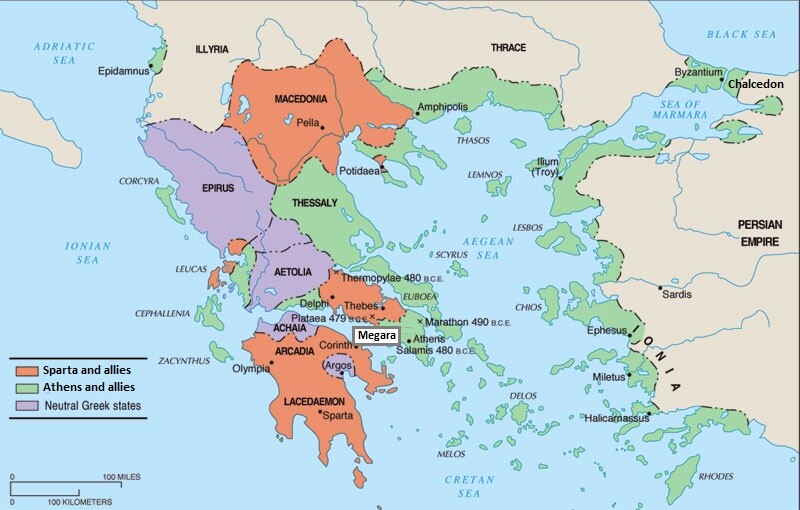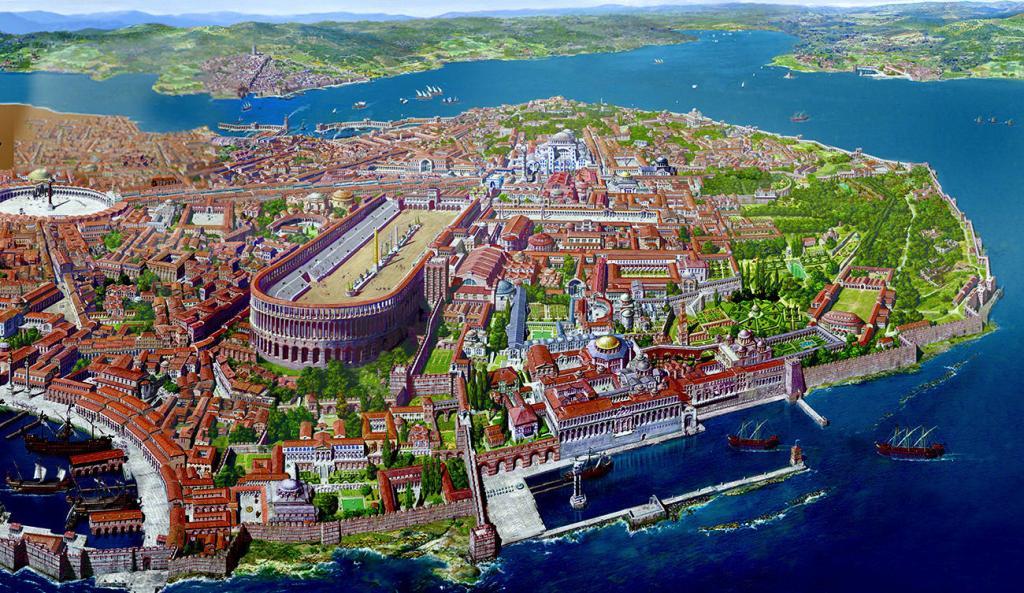The history of Istanbul officially goes back 2700 years. The history of the city consists of multiple layers and has the heritage of Ancient Greek, Roman, Byzantine and Ottoman civilizations. In this article, you can find a brief history of Istanbul under five headings.
Short History of Istanbul
Istanbul has been known by three different names throughout the course of history. It was named Byzantium when it served as a Greek colony, Constantinople when it was the capital of Romans and later Byzantines, and during the final years of the Ottoman Empire, the city was known as Istanbul.
Ottomans continued to use the name “Konstantiniyye”, the Turkish version of Constantinople, for many years when referring to Istanbul. Let’s start by giving you a brief rundown of the ancient history of Istanbul leading up to the modern day.
1. Byzantium

To start our journey, we need to take you back to 7th Century BC. It all begins when a king named Byzas wanted to emigrate from the city of Megara in Ancient Greece. The king sought advice from the oracles at the Temple Apollo.
It was common for people to seek advice from these great oracles during the ancient times. The oracle advised King Byzas to venture east and build his own city opposite of the “City of the Blind”. At the time, Byzas and his advisors didn’t understand what the oracle meant.
Regardless, Byzas ventured east as he was told and came to a stop when he reached the European and Asian border. On the Asian shore, opposite to where he stood, he saw a colony named Chalcedon.
Byzas was very surprised that the people of Chalcedon had not seen the strategic importance of the European Side. For this reason, he concluded that they were the “Blind People” described by the oracle.
Thus, Byzas established his city on the highest hill of what is now known as the Historical Peninsula. The city was roughly where the current Topkapi Palace stands. And it was called Byzantium in honor of its founder.
2. Roman Empire

During Emperor Constantine’s rule, he decided to shift Roman Empire‘s center to east to find more resourceful and productive states to further his power. He led an expedition to find a new capital for his empire and settled on Byzantium.
He asked his architects to recreate the city, restructuring it to fit the tastes of the majestic Roman Empire. In just six years, Constantine widened the walls, claimed more land and constructed many new Roman buildings.
Iconic structures such as the Great Palace, Forum of Constantine and Hippodrome were constructed during this period. The city was designated as Nova Roma (New Rome) in 330, making it the co-capital of the Roman Empire alongside Rome and he named it after himself; Constantinople.
3. Byzantine Empire

When Emperor Theodosius divided the Roman Empire in two (395) the city of Constantinople remained as the capital of the Byzantine Empire (aka Eastern Roman Empire). After 81 years, the Western Roman Empire fell and the city of Rome was seized by the Goths. (476)
The city of Constantinople, however, flourished under its deep Greek roots and Roman administrative rule. It remained alive and well for many years, and the city grew immensely under the rule of Emperor Justinian. In fact, it was under his rule that the Hagia Sophia was built, a masterpiece of Byzantine architecture.
He led many conquests into the west to reclaim Roman borders. He even came close to restoring Rome to its former glory, but his successors ultimately failed and could not hold the land that he had worked so hard to claim back from the invaders.
Between 1204 and 1261, the capital of Byzantine Empire invaded by Crusaders. They could not recover after 57 years occupation and started to decline. Once mighty empire reduced to a city-state. The city (Constantinople) was eventually seized by the Ottoman Turks in 1453.
If you want to discover the Byzantine heritage in Istanbul, you can explore the city with a private tour guide. Especially the Byzantine history tour in Istanbul will attract the attention of history buffs.
4. Ottoman Empire

When the city was seized by the Ottoman Empire, they made it the centre of their young empire. Sultan Mehmed the Conqueror (Mehmed II) knew much about the Byzantine Empire.
In fact, his first request when entering the city was to see the majestic Hagia Sophia. The city’s buildings were in poor condition as the Byzantines neglected to repair them during the last few years of their downfall. Sultan Mehmet II is rumoured to have been upset that he could not see ancient Constantinople in all of its glory.
As a result, the Sultan ordered for the Hagia Sophia to immediately be restored and converted into a mosque. He continued constructing new buildings, even raising a palace for himself known as Topkapi Palace. The palace was built over the ancient ruins of the city of Byzantium and some of the remnants can be seen from inside of the palace.
After the Ottomans declared Istanbul as their capital, they quickly grew and ruled an empire spanning three continents. During the Ottoman period, the city continued to be called Constantinople for a long time. It is believed that the name Istanbul derives from Stanpoli, which means city centre.
5. Modern Turkey

After the Treaty of Karlowitz in 1699, the Ottoman Empire continued to decline for several hundred years. A few Sultans attempted to rebuild the empire by making reforms to ultimately catch up to Europe. However, their efforts were not enough to save the empire.
The Ottomans lost their human resources in the wars and could not find the opportunity to catch up with the West in terms of technology. In the 19th century, the economy began to fail and the World War I ultimately consumed them.
As Istanbul was under heavy assault from enemy invasion, Mustafa Kemal Ataturk (a former Ottoman general) pushed for independence at the Grand National Assembly of Turkey (TBMM) that was founded in Ankara.
The Turkish War of Independence after WWI lasted 4 years (between 1919 and 1923). After the war was won, the Republic of Turkey was established on 29 October 1923.
The capital was then moved to Ankara and Istanbul lost its title as a capital. However, it’s still one of the most important cities in Modern Turkey and has been transformed into an attraction due to its deep history.
Written by Serhat Engul
Excelente. Felicitaciones Sr Engul
Hola Chela, gracias por tu amable reseña.
Ma sha Allah
Indebted to you for such a beautiful information…
I recently visited Istanbul it has indeed a sublime glory in history…
Dear Yasser, thank you for your nice review.
Hi there! Nice work. I think there is an error in the first.. “Athens and allies” should be green; “Sparta and allies” should be orange (?).
Hi Nik, thank you very much for your contribution. I got this map from an anonymous source to enrich the narrative. However, I had not noticed this error in the coloring. I will edit and re-add as soon as possible.